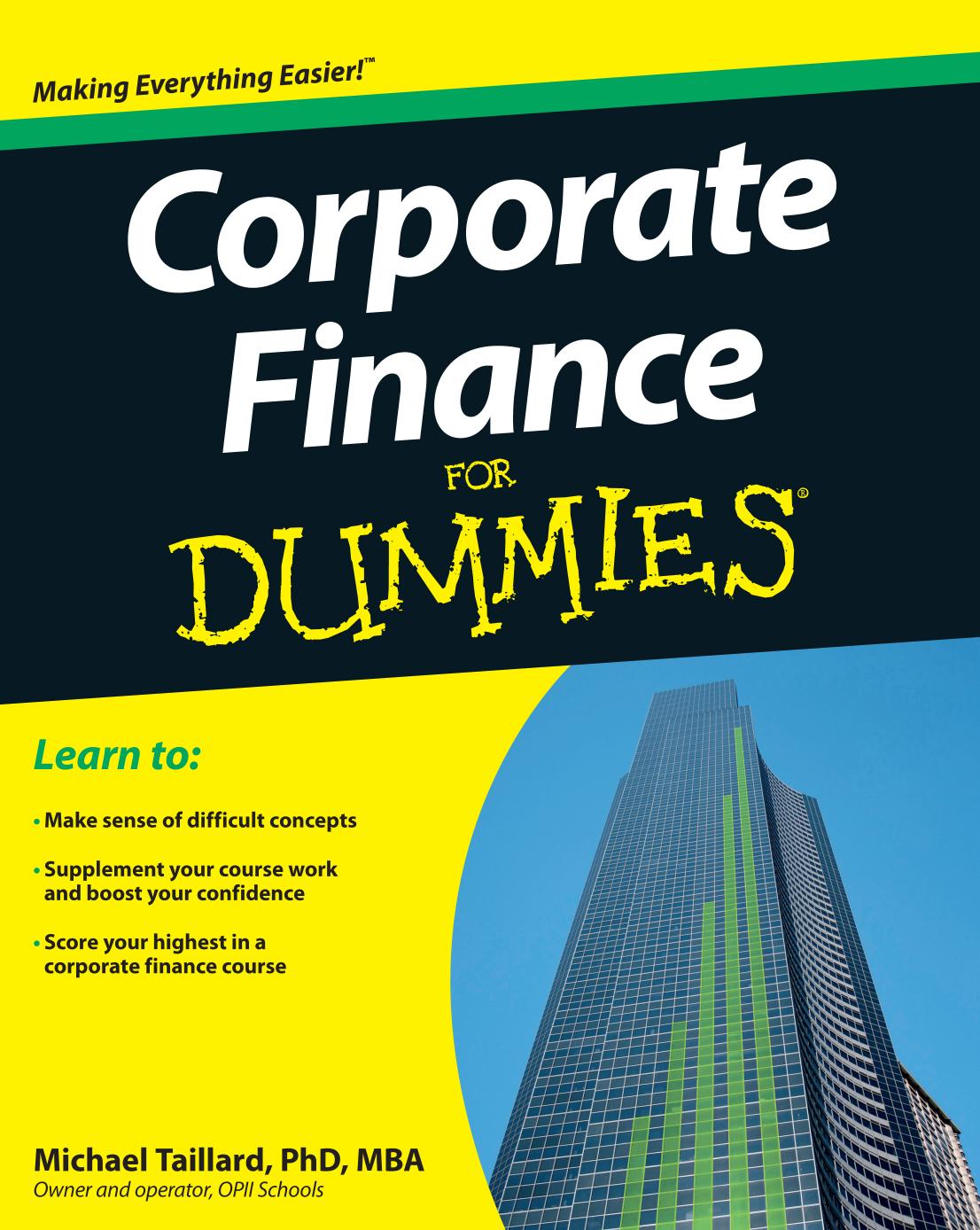Corporate Finance For Dummies by Michael Taillard

Author:Michael Taillard [Taillard, Michael]
Language: eng
Format: epub, pdf
Publisher: Wiley
Published: 2012-12-06T00:00:00+00:00
Chapter 13
Measuring Valuations of the Might-Be: Derivatives
In This Chapter
Getting an overview of the risks and benefits of options
Understanding the difference between forwards and futures
Switching things up with swaps
For a financial tool that was originally designed to reduce the amount of risk associated with many of the most common corporate transactions, derivatives have become a veritable minefield for many companies. Not only can there be a strong attraction for the use of derivatives as a way to generate income despite the high level of risk this can create, but derivatives are also frequently not properly represented in corporate financial statements. Still, despite the common pitfalls, derivatives really are quite simple to understand and use.
In this chapter, I focus on several of the most common types of derivatives: options, forwards, futures, and swaps. I describe how to use these four types of derivative to limit risk and generate revenues, and I briefly explain how to measure the value of each one. Note that more types of derivatives are out there and they all have multiple variations. I don’t have the space to cover them all here, so I’ve highlighted just the most common ones.
Introducing the Derivatives Market
Derivatives are legal contracts that set the terms of a transaction that can be bought and sold as the current market price varies against the terms in the contract. Originally, derivatives were all about bringing price stability to products that can be quite volatile in their pricing over short periods of time. Prices change quite a lot over time, which adds a degree of uncertainty and risk for those who either produce or purchase large quantities of goods.
Say, for example, that a producer of candy corn anticipates producing 10 tons of the candy but is afraid that prices will go down before it produces and sells it all, putting the producer at risk of earning lower profits or even losing money on the sale, since the producer is incurring overall prices as it produces the candy corn. The producer calls its derivatives agent, who then puts together whichever type of derivatives contract the producer wants and attempts to find a buyer who will purchase the candy corn at a later date, using the terms of the derivatives contract. On the flip side, say that a buyer of candy corn knows it wants to purchase 10 tons of the candy about four weeks before Halloween but is afraid prices will increase by then. The buyer can also call an agent to create a derivatives contract for the purchase of candy corn.
By speculating on the changes in future prices, companies have the opportunity to buy and sell many derivatives contracts at a profit simply because of other people’s willingness to trade these contracts. As a result, derivatives have dramatically increased in popularity as a method of generating income. They can be purchased and then resold at a profit; however, the whole process involves a great deal of risk of multiple types. Although derivatives
Download
Corporate Finance For Dummies by Michael Taillard.pdf
This site does not store any files on its server. We only index and link to content provided by other sites. Please contact the content providers to delete copyright contents if any and email us, we'll remove relevant links or contents immediately.
| Corporate Finance | Crowdfunding |
| Financial Engineering | Financial Risk Management |
| Wealth Management |
The Black Swan by Nassim Nicholas Taleb(7010)
Bad Blood by John Carreyrou(6552)
Pioneering Portfolio Management by David F. Swensen(6226)
Millionaire: The Philanderer, Gambler, and Duelist Who Invented Modern Finance by Janet Gleeson(4374)
Skin in the Game by Nassim Nicholas Taleb(4162)
Bullshit Jobs by David Graeber(4094)
The Money Culture by Michael Lewis(4076)
Skin in the Game: Hidden Asymmetries in Daily Life by Nassim Nicholas Taleb(3929)
The Wisdom of Finance by Mihir Desai(3651)
Blockchain Basics by Daniel Drescher(3507)
Liar's Poker by Michael Lewis(3368)
Fooled by Randomness: The Hidden Role of Chance in Life and in the Markets by Nassim Nicholas Taleb(3044)
Hands-On Machine Learning for Algorithmic Trading by Stefan Jansen(3027)
The Intelligent Investor by Benjamin Graham Jason Zweig(2995)
Mastering Bitcoin: Programming the Open Blockchain by Andreas M. Antonopoulos(2981)
The Power of Broke by Daymond John(2897)
Investing For Dummies by Eric Tyson(2894)
Market Wizards by Jack D. Schwager(2643)
Zero Hour by Harry S. Dent Jr. & Andrew Pancholi(2614)
